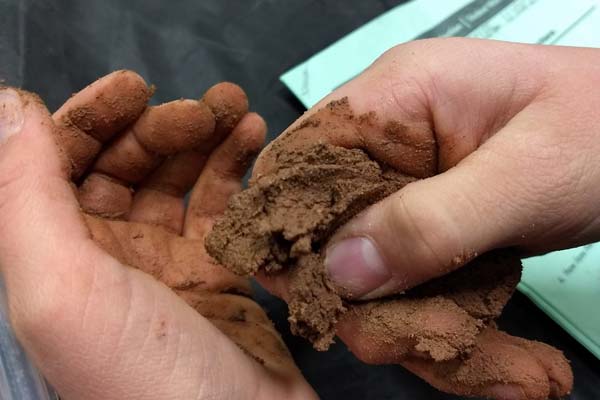LandPKS Learning
Knowledge Hub

Research: A Comparison of Soil Texture‐by‐Feel Estimates – Implications for the Citizen Soil Scientist
Estimating soil texture is a fundamental practice universally applied by soil scientists to classify and understand the behavior, health, and management of soil systems.
“A Comparison of Soil Texture‐by‐Feel Estimates: Implications for the Citizen Soil Scientist”
by Shawn W. Salley, Jeffrey E. Herrick, Caitlin V. Holmes, Jason W. Karl, Matthew R. Levi, Sarah E. McCord, Cornelis van der Waal, and Justin W. Van Zee
First published: 29 November 2018
https://doi.org/10.2136/sssaj2018.04.0137
Abstract
Core Ideas
- Soil scientists estimate soil texture class with higher accuracy then previously reported in the literature.
- Seasonal field scientists and citizen scientists estimate texture‐by‐feel with similar accuracy to university students with limited training.
- When novice observers misclassify texture class, it is more likely because of errors in estimating ribbon length than estimating grittiness.
Estimating soil texture is a fundamental practice universally applied by soil scientists to classify and understand the behavior, health, and management of soil systems. While the accuracy of both the soil texture class and the estimates of the percentage of sand and clay is generally accepted when completed by trained soil scientists, similar estimates by “citizen scientists” or less experienced seasonal resource scientists are often questioned. We compared soil texture classes determined by texture‐by‐feel and laboratory analyses for two groups: professional soil scientists who contributed to the USDA‐NRCS National Soil Characterization Database and seasonal field technicians working on rangeland inventory and assessment programs in the Western United States and Namibia. Texture accuracy was compared using a confusion matrix to evaluate classification accuracy based on the assumption that laboratory measurements were correct. Our results show that the professional soil scientists predicted the laboratory‐determined texture class for 66% of the samples. Accuracy for seasonal field technicians was between 27 and 41%. When a “correct” prediction was defined to include texture classes adjacent to the laboratory‐determined texture based on a standard USDA texture triangle, accuracy increased to 91% for professionals and 71 to 78% for seasonal field technicians. These findings highlight the need to improve options for increasing the accuracy of field‐textured estimates for all soil texture observers, with relevance to career soil scientists, seasonal technicians, and citizen scientists. Opportunities for improving soil texture accuracy include training, calibration, and decision support tools that go beyond simple dichotomous keys.
Download PDF
Mobile App | Data Portal | Knowledge Hub | Habitat Hub | Learning Collections | Blog | About | Contact | Support



